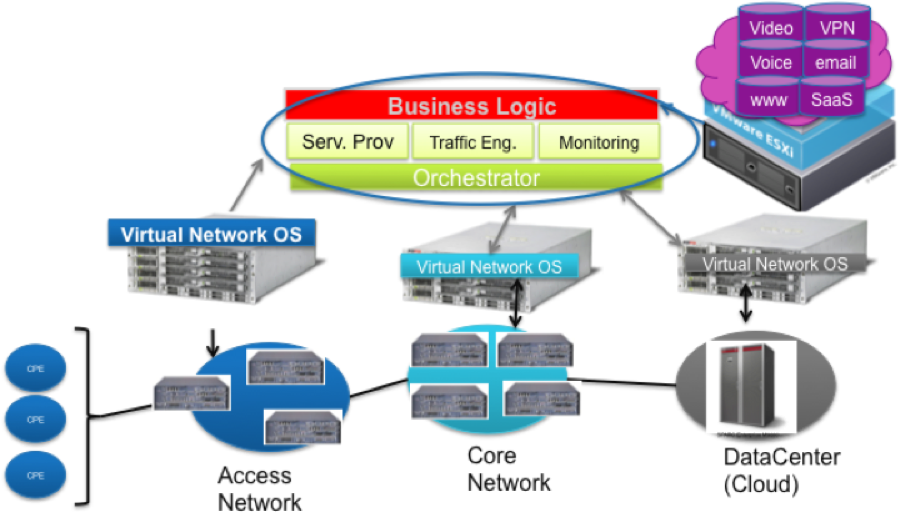How the SDN and NFV Ecosystem Is Powering Digital Innovation
In today’s rapidly evolving digital landscape, the demand for faster, more flexible, and cost-effective network infrastructure has never been higher. Two transformative technologies—Software-Defined Networking (SDN) and Network Functions Virtualization (NFV)—are at the forefront of this revolution. Together, they are reshaping the networking world and driving unprecedented levels of digital innovation across industries.
Understanding SDN and NFV
Software-Defined Networking (SDN) is a networking paradigm that separates the control plane from the data plane, allowing network administrators to manage traffic flows programmatically through centralized software controllers. This approach provides enhanced flexibility, scalability, and control over network resources.
Network Functions Virtualization (NFV), on the other hand, decouples network functions—such as firewalls, load balancers, and routers—from proprietary hardware, enabling them to run as software applications on commercial off-the-shelf (COTS) hardware. This dramatically reduces the need for specialized hardware and increases deployment agility.
The Synergy Between SDN and NFV
While SDN and NFV are distinct technologies, their combined implementation creates a powerful ecosystem that maximizes the benefits of both. SDN provides the programmable control required to dynamically manage the network, while NFV delivers the flexibility to deploy network services on demand. Together, they enable a more responsive and agile IT infrastructure capable of adapting to changing business needs.
Fueling Digital Transformation
The SDN and NFV ecosystem is a cornerstone of digital transformation in several key ways:
1. Enabling Agile Service Delivery
SDN and NFV allow businesses to deploy new services faster and with greater efficiency. Network operators can roll out updates, launch virtual services, or scale resources within minutes—tasks that traditionally took days or weeks. This agility is critical for companies seeking to stay competitive in the digital era.
2. Reducing Operational Costs
By moving away from proprietary hardware and embracing virtualization, organizations can significantly cut capital and operational expenditures. SDN and NFV reduce the need for manual configuration and maintenance, leading to lower labor costs and improved network efficiency.
3. Enhancing Network Visibility and Control
Centralized management through SDN controllers offers real-time visibility into network performance. Combined with NFV, this enables dynamic adjustments based on current network demands, ensuring optimal performance and resource utilization.
4. Improving Security and Compliance
The programmable nature of SDN makes it easier to implement and update security policies across the network. NFV allows for the deployment of virtualized security functions at scale, enabling organizations to respond quickly to threats and enforce compliance standards with minimal disruption.
Industry Applications of SDN and NFV
Numerous industries are leveraging SDN and NFV to drive innovation:
- Telecommunications: Telecom providers use SDN and NFV to create scalable and cost-effective networks that support 5G, IoT, and edge computing.
- Healthcare: Hospitals and clinics benefit from enhanced data security, faster access to applications, and improved network reliability.
- Finance: Financial institutions utilize SDN and NFV to ensure high-speed, secure transactions while maintaining compliance with regulatory standards.
- Cloud Services: Cloud providers rely on SDN and NFV to offer flexible, high-performance networking solutions to their customers.
Challenges and Future Outlook
Despite the clear advantages, adopting SDN and NFV comes with challenges, such as integration complexity, skills gaps, and legacy infrastructure compatibility. However, with continued investment in training, research, and open standards, these barriers are gradually being overcome.
Looking ahead, the future of SDN and NFV is bright. As artificial intelligence (AI), machine learning (ML), and edge computing continue to advance, SDN and NFV will play an increasingly critical role in enabling intelligent, adaptive, and automated networks.
Conclusion
The SDN and NFV ecosystem is a key driver of digital innovation, empowering organizations to build smarter, faster, and more efficient networks. By embracing these technologies, businesses can not only reduce costs and improve agility but also position themselves for success in a digitally connected future.







